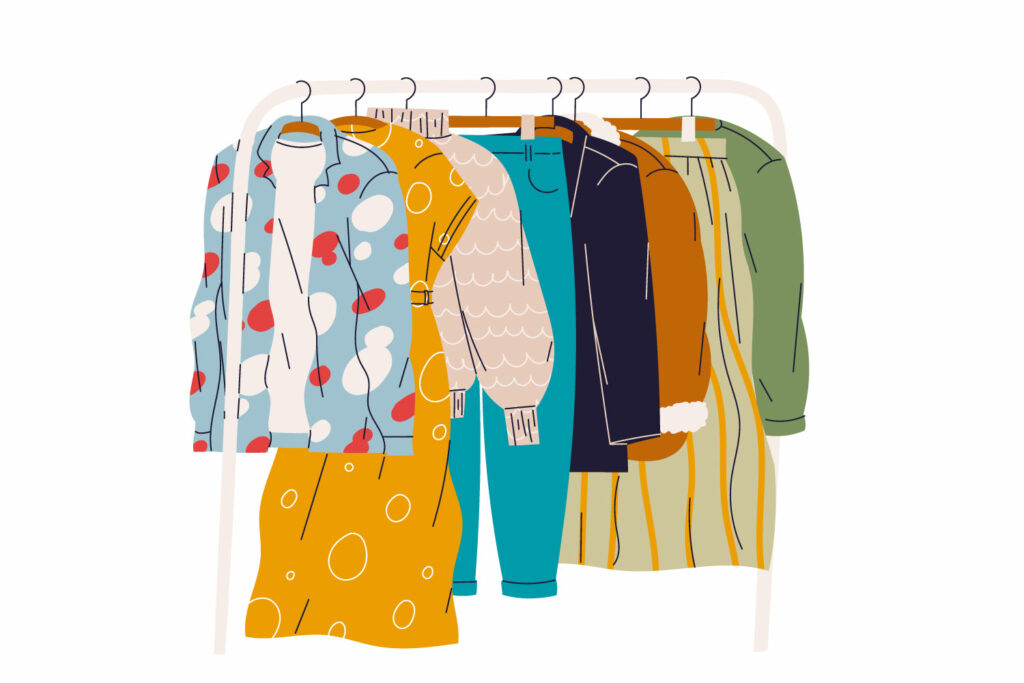Knowing what to look for is key to thrifting, which benefits the environment, your wallet and sense of style.
Do you have a pal that never leaves an op shop without an amazing, unique outfit, while you’re left sorting through piles of musty T-shirts? You too can learn how to thrift like a pro, saving you time and money in your quest for an inimitable collection of clothes.
The joy of pre-loved clothes
Growing up, Sally Steele’s mum — a stylish lady herself who altered second-hand garments to create outfits — made her daughter’s clothes. At 11, Sally visited the op shop with her. “I was going to a disco and really wanted to wear this lilac jumpsuit I’d seen in Vogue,” she says. “Mum found an old, quilted bedspread at a charity shop and made it into an awesome jumpsuit in a couple of days.”
With her wardrobe now predominantly made up of second-hand clothes,
Sally is passionate about spreading the word about the joys of pre-loved fashion. As a sustainable style advocate and author of the book Dare More, Care Less, she prioritises thrifting over buying new.
Making the shift
The figures around fast fashion are staggering — as reported by ABC’s War on Waste, 6000 kilograms of garments are thrown into landfill every 10 minutes in Australia, while 2700 litres of water are needed to produce just one item of clothing.
Despite growing awareness, many of us still choose to buy new clothes rather than pre-loved due to convenience. “This is an easy thing that you can change,” encourages Sally. “Thrifting will allow you to shop without guilt, save money and give back to charities that are helping our most vulnerable.”
Like with any change, don’t expect yourself to dive into an all-or-nothing approach. Aiming for a completely thrifted wardrobe is a hard ask, so “don’t be shamed into paralysis because you have the odd [fast-fashion] piece,” says Sally.
Letting go of preconceptions

While some of us take to thrifting like a duck to water, others need to be convinced of the appeal of second-hand.
“In the old days, there was a misconception about op shops not being attractive or well laid out, but anyone who has stepped into one recently knows that has changed dramatically — they are beautifully styled
and visually merchandised,” says Sally.
How to find pre-loved gems
There is, of course, a talent for finding gems when it comes to thrifting. Sally suggests these five tips for scoring head-turning bargains.
1. Research runway trends
It could be the return of lilac, retro florals or sequins — check what’s trending right now to find fashion-forward pieces in your local op shop. As fashion is cyclical, it’s likely there will be vintage items that are now in fashion again.
2. Know your fabrics
Opt for natural fabrics. These can be harder to find but are undoubtedly longer lasting and better for the environment.
“Unfortunately, due to our accelerated consumption, 65 per cent of clothes now are made from petroleum-based polyester that breaks up into microplastics and heads into our oceans,” says Sally. “I speed search with my fingertips, stopping when I feel quality cotton, linen, silk, leather and suede.”
3. Look for statement details
Sally also keeps an eye out for details such as embroidery, fringing, eyelets and pleats to find clothes with that extra pizzazz.
4. Choose timeless prints
Animal prints, spots and gingham never really date, so if you want a timeless wardrobe, look out for these.
5. Pace yourself
“Plan your trip and focus on two or three nearby op shops, unless you are a heavyweight! That will be your max before you need a cafe stop,” says Sally.
This article was originally found in Being Magazine Issue 10
BEING Magazine is available from WellBeingShop.com.au




